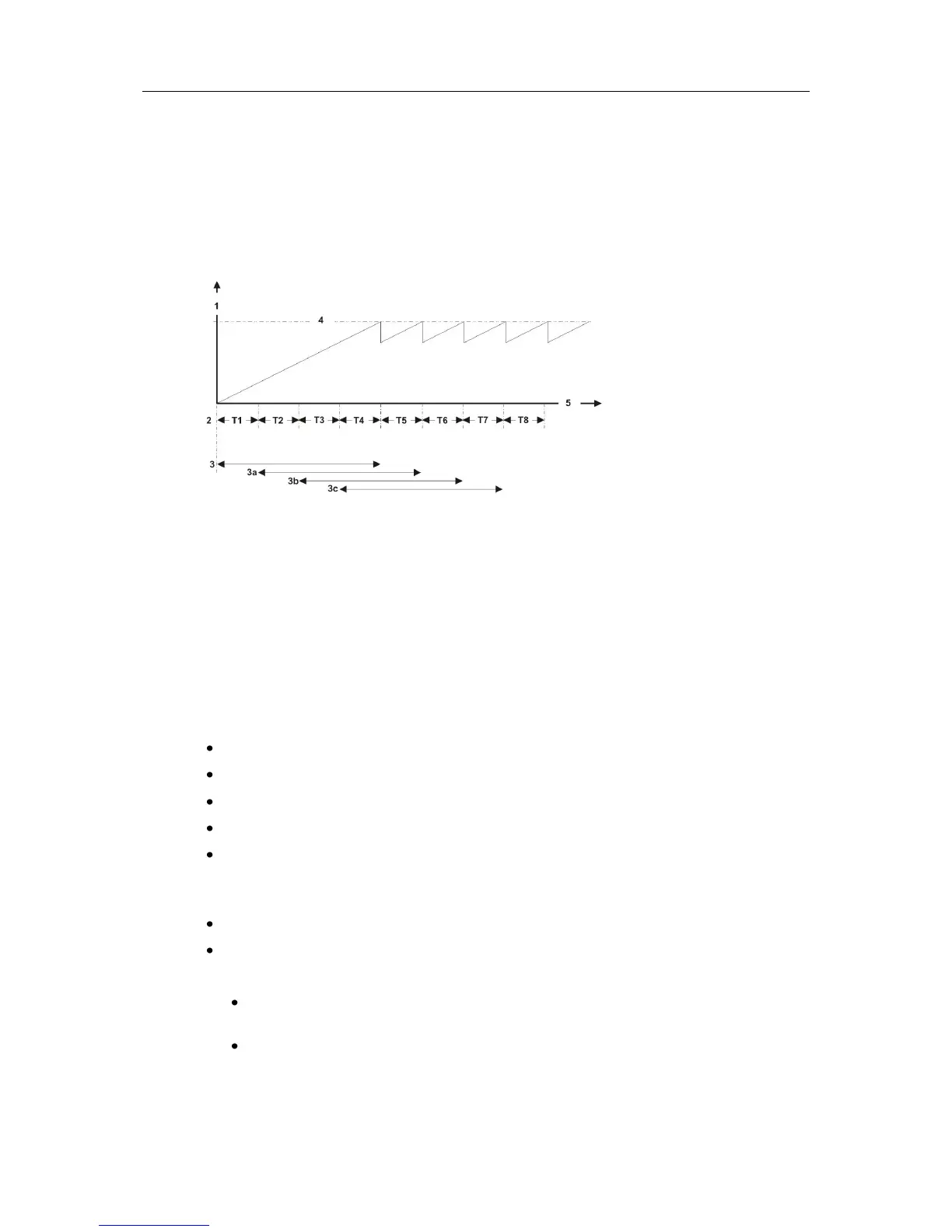Sliding mode
In the sliding mode the demand period is divided into between 1 and 15 fixed integration periods. The total
maximum duration of a sliding demand period is 15 (maximum periods) x 60 (maximum minutes) = 900 minutes.
The illustration below shows a sliding mode demand period comprising 4 integration periods with, for example a
duration of T = 5 minutes. The sliding demand period total duration = 20 minutes with the rising demand value
based on a constant load:
At the end of each completed integration period (T) the demand value is calculated and temporarily stored.
At the end of the first sliding period (3), an average demand value based on the results from all integration
periods within that sliding period (T1,T2,T3,T4), is calculated.
When the next integration period (T5) ends, a new average demand value based on the results of integration
periods (T2,T3,T4,T5), is calculated.
This process is then repeated at the end of every successive integration period until an end of billing event
occurs.
7.10.4.4. Demand calculation
At the end of each integration period (EOI), the meter calculates the following:
average demand over the integration period
average three-phase power factor over the integration period
minimum power factor - the meter records the lowest values in the current billing period
average power factor over the current billing period
maximum demand coincident values - if enabled
If coincident values is set on channel 1 and a maximum demand is recorded, the demand on the last
channel is also recorded (even if a maximum demand is not detected on that channel)
cumulative maximum demand - the meter records this value over the current billing period
maximum demand - the meter records the 3 highest peaks in the current billing period.
The meter offers two maximum demand modes (applied across all channels):
Maximum mode - this default mode registers the maximum demand peaks only, any preconfigured
thresholds will be ignored.
Maximum Excess mode - this mode activates the preconfigured thresholds. If a threshold is defined for
a channel, only the maximum demand peak value above the threshold is recorded. If no threshold is
defined the operation is identical to Maximum mode (as above).
